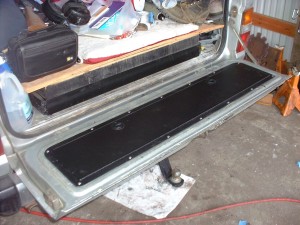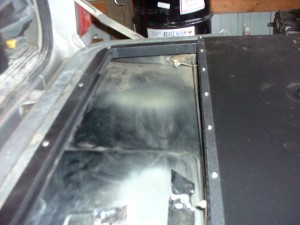When driving the back roads of Washington you are likely to encounter all sorts of roads and vehicles. I would like to address “logging roads” through the forests of the Northwest.
Having worked in the woods for a number of years, I have become accustomed to driving logging roads and “dealing with” other logging road users. Weekends are a little easier but during the week logging roads can be down right dangerous to the unaware driver. There can be a wide range of vehicle traffic such as foresters in pickups to fuel and lube trucks servicing the heavy equipment at logging sites to loaded log and dump trucks. While drivers can seem rude at times, remember this is THEIR place of work. Their livelyhood relies on traveling these roads.
A few basic rules to follow while driving these roads are common sense. First of all SLOW DOWN and turn your headlights on. It may seem like you are the only one out there at times but 35 mph on a gravel corner can be really fast when that loaded logger lumbers into view, and according to the “law of gross tonnage” you will not be the winner. Many of the roads are not posted with speed limits, unless it is part of the county road system. 10-15 mph is a good speed for most locations with a narrow 1 or 1 1/2 lane road. Wider roads with long lines of sight and well maintained can be safe at 35 mph. Remember there are spur roads (short dead end roads) all along the way and they are often difficult to see from a distance. Headlights make it a lot easier to been seen as you pass from clearing to timber. If the oncoming car is in the sun and you are in the shadows you will be very difficult to see.
Second is to read road and warning signs. This can be misleading, at times as old signs are often neglegted and no longer a valid warning. Look for other “signs” too. If the sign says “Keep Out, active opperations” but the road has a layer of leaves and looks as though no one has driven it in a while you can assume operations are no longer active. If the road is well traveled and there are other indicators of a logging operation (strips of fresh bark, new rock, etc along the side of the road) then do as the sign says. If you are up berry picking and you encounter a sign that says the roads have recently been sprayed, look for a different berry patch. Chemicals used on roadsides are not hazardous to us in the doses you will find, but who like fresh fruit covered in weed killers. Lastly, plan on staying out of the woods during HIGH fire danger.
Active logging roads are often open to travel, even during the day when trucks are traveling it. Look for a sign that has the CB channel (you have a CB don’t you?) for the road and make not of the road name or number. Number three is, if you are going to travel logging roads, get a CB radio. They are inexpensive and are available at Radio Shack as well as other online and local electronic stores. Tune to the proper channel and listen for traffic. If a channel is not marked start at ch14 for main haul roads, ch12 is often used on secondary haul roads as well as ch13. Call out your position as you start up the road (I will use C-line as a generic road name) “in bound c line at the black top”. Look for numbers along the way either painted on threes, stumps or rocks as well as little signs tagged to trees. These are road markers used to identify the position of various vehicles along the road. If on your way in you pass a 2 painted on a tree call out “”inbound c-line marker 2”. Also listen to were the other vehicles are. “Loaded logger number 4 outbound (or east/west/north/south depending on road)” means you should start looking for a good turn off before you meet up with the truck.
Last, keep to the right. Theres the basics.
I found some good info on CB radios over at Roadtrip America.
If you have other advice or experiences with logging roads, please contact me or comment. I would also like to start a list of common CB channels used on main logging roads in the Northwest.

